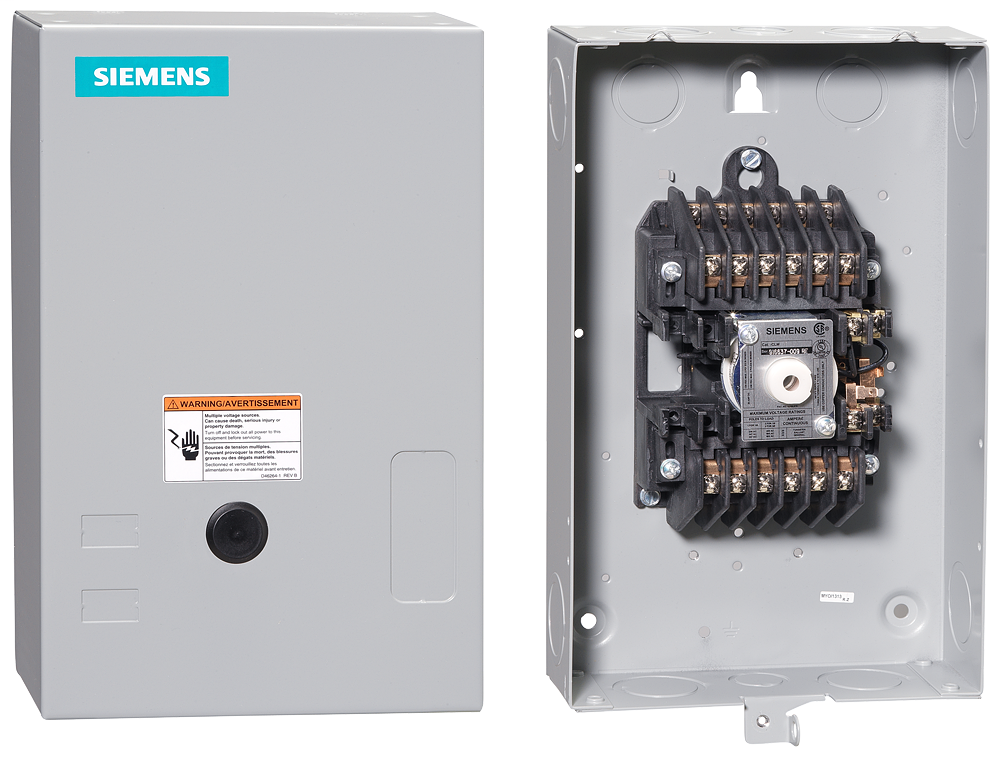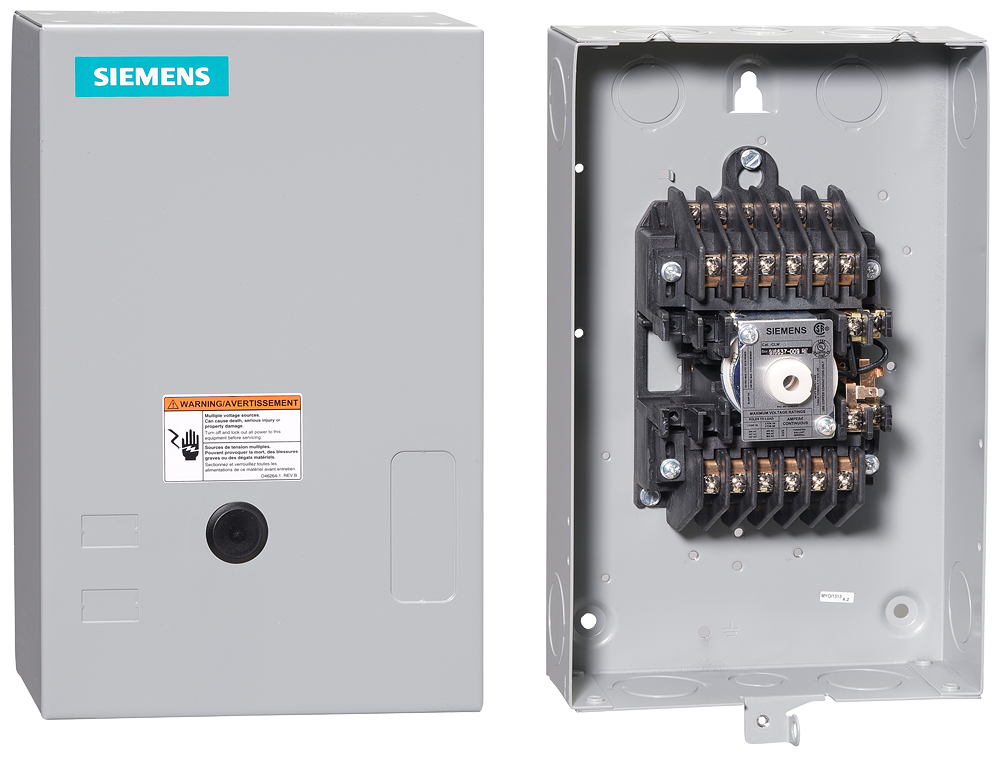Contactors and Accessories
Three-phase electric motors and other high power loads need electrical control systems to manage their current. A contactor establishes and interrupts a circuit — or turns it on and off — and can handle this large capacity.
-
 Siemens Controls
Siemens ControlsCLM1B12120: Siemens Controls CONTACTOR LTG M-HELD,20A,12NO,N1,120V,
- Model #:
- CLM1B12120
- UPC #:
- 75455451146
- Part #:
- CLM1B12120
- New/Surplus $ 2143
- Refurb. Price $1500 Save up to $ 643
- Repair Price $1072 Save up to $ 1071
-
 Siemens Controls
Siemens ControlsCLM1C02120: Siemens Controls CONTACTOR LTG M-HELD,30A,2NO,N1,120V,
- Model #:
- CLM1C02120
- UPC #:
- 75455439441
- Part #:
- CLM1C02120
- New/Surplus $ 855
- Refurb. Price $599 Save up to $ 256
- Repair Price $428 Save up to $ 427
-
 Siemens Controls
Siemens ControlsCLM1B08120: Siemens Controls CONTACTOR LTG M-HELD,20A,8NO,N1,120V,
- Model #:
- CLM1B08120
- UPC #:
- 75455439432
- Part #:
- CLM1B08120
- New/Surplus $ 1715
- Refurb. Price $1201 Save up to $ 514
- Repair Price $858 Save up to $ 857
-
 Siemens Controls
Siemens ControlsCLM1B10120: Siemens Controls CONTACTOR LTG M-HELD,20A,10NO,N1,120V,
- Model #:
- CLM1B10120
- UPC #:
- 75455439436
- Part #:
- CLM1B10120
- New/Surplus $ 1888
- Refurb. Price $1322 Save up to $ 566
- Repair Price $944 Save up to $ 944
-
 Siemens Controls
Siemens ControlsCLM1B06120: Siemens Controls CONTACTOR LTG M-HELD,20A,6NO,N1,120V,
- Model #:
- CLM1B06120
- UPC #:
- 75455439428
- Part #:
- CLM1B06120
- New/Surplus $ 1169
- Refurb. Price $818 Save up to $ 351
- Repair Price $585 Save up to $ 584
-
 Siemens Controls
Siemens ControlsCLM1B04120: Siemens Controls CONTACTOR LTG M-HELD,20A,4NO,N1,120V,
- Model #:
- CLM1B04120
- UPC #:
- 75455439424
- Part #:
- CLM1B04120
- New/Surplus $ 940
- Refurb. Price $658 Save up to $ 282
- Repair Price $470 Save up to $ 470
What Is a Contactor?
A contactor is a kind of electrical switching device that switches an electrical circuit on and off. They have multiple contacts that give the load operating power when the contactor coil is powered. When the current is interrupted, the contactor produces an electrical arc that can be reduced and controlled. They can handle a range of currents and voltages due to the quick opening and closing of the contacts, so they are used with high-current loads.
The current flows through the contactor and energizes the electromagnet, which creates a magnetic field. The magnetic field causes the core to move the armature, completing the circuit. When the current stops, the coil is de-energized, which opens the circuit.
Types of Contactors
There are three main types of contactors:
- – Magnetic contactor: Magnetic contactors work using electromechanical mechanisms. Since they do not require human intervention, they can be operated remotely, making them a safe option. They are also efficient in that they require minimal energy.
- – Knife blade switch contactor: Knife blade switch contactors have a metal strip that drops into a contact when it is operating and is attached to a lever to move up and down. Due to inefficiency and functional and safety issues, this type of contactor is no longer used.
- – Manual controller contactor: This contactor style is similar to knife blade switch contactors, plus additional features like encasement, smaller sizes, double break and safer operation.
Within these types are many specific contactor models, including:
- – International Electrotechnical Commission (IEC) magnetic contactors: These give accurate ratings for automatic cutoffs and power circuit switching in the event of a power failure.
- – National Electrical Manufacturers Association (NEMA) magnetic contactors: Switch capacitors, transformers and heating loads or for use as a motor contactor.
- – Definite-purpose magnetic contactor: Control electric loads in food service, HVAC and data processing applications.
- – Lighting contactors: Used on lighting circuits.
- – Hoist contactors: Used to control cranes, door operators and electric hoists.
- – Mercury displacement contactors: Use mercury as a contact material and open and close circuits in heaters, electric transformers and capacitors.
Contactors are used with electric motors in most instances, although ideal uses vary by type. Use a contactor if there are 9 amps or more of current or if the machine is one or three phases.
Common Problems and Questions With Contactors
Though they both switch a circuit, contactors and relays are not the same. They vary in load capacity, auxiliary contacts, safety features and contact standards, as well as applications.
Get High-Quality, Cost-Effective Electronic Equipment Today
If you need to purchase a contactor or have yours repaired, the team at Global Electronic Services is ready to help. We have thousands of products in stock to choose from, and we return repaired electronics within one to five days. Call 877-249-1701 to learn more today.
